Annual review: reflections and projections
Our work in 2022 and projections for 2023.
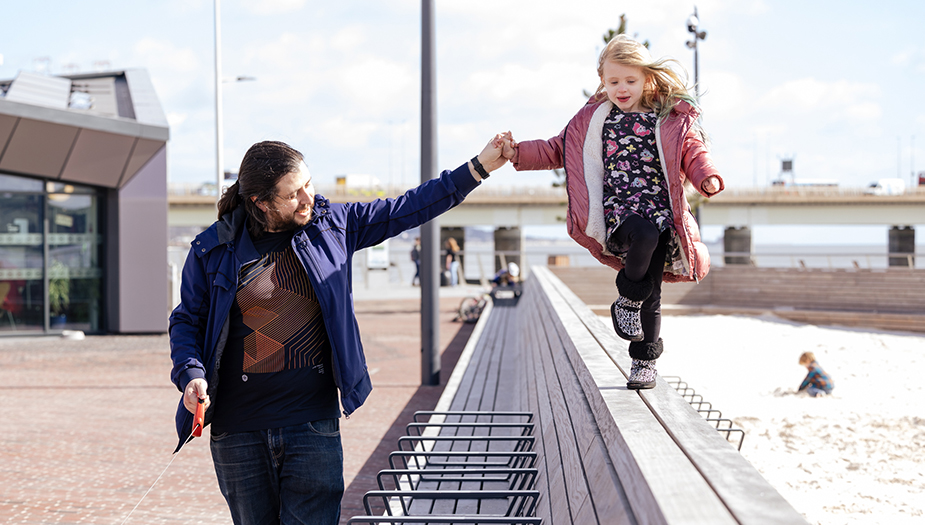
Welcome to our 2022 Annual Review. We are excited to share the work we have been up to in the past year. To view our stories, click on the tabs below. Each section includes projects we have been a part of, short snapshots of our work and new projects we are embarking on for 2023.
You can also take away our shorter version of the annual review by clicking on the link below. Our PDF version does not include the shorter stories.
Header image credit: Miss Lydia Photography
We have called this review of 2022 “reflections and projections”. Working to make changes to our places takes time. So, whilst we look back and celebrate our achievements, we are always looking ahead at what is next.
This document is structured around our approach and how we deliver our ten-year strategy:
We have collected stories of how we have worked with partners to deliver better places in Scotland. On our website, you can also read more snapshots of our work to give you a richer picture. You can also explore how we are working to make Scotland’s Place Principle the way we plan and develop our places – where we collaborate and maximise the impact of our investments.
At the core of our work is collaboration. In this document and on our website, you will see the range of partners and organisations that we continue to work with. We want to say a big thank you to all those who have engaged with us.
We hope you enjoy our reflections, and we invite you to be part of our projections in 2023 and beyond, working with us to deliver our strategy and aims.
We provide advice on projects across Scotland. The work varies in size - from a single building through to a region. This work is done in collaboration with a range of partners. We work with local authorities and the Key Agencies Group, and on capital investment projects in education, health and care.
In this section:
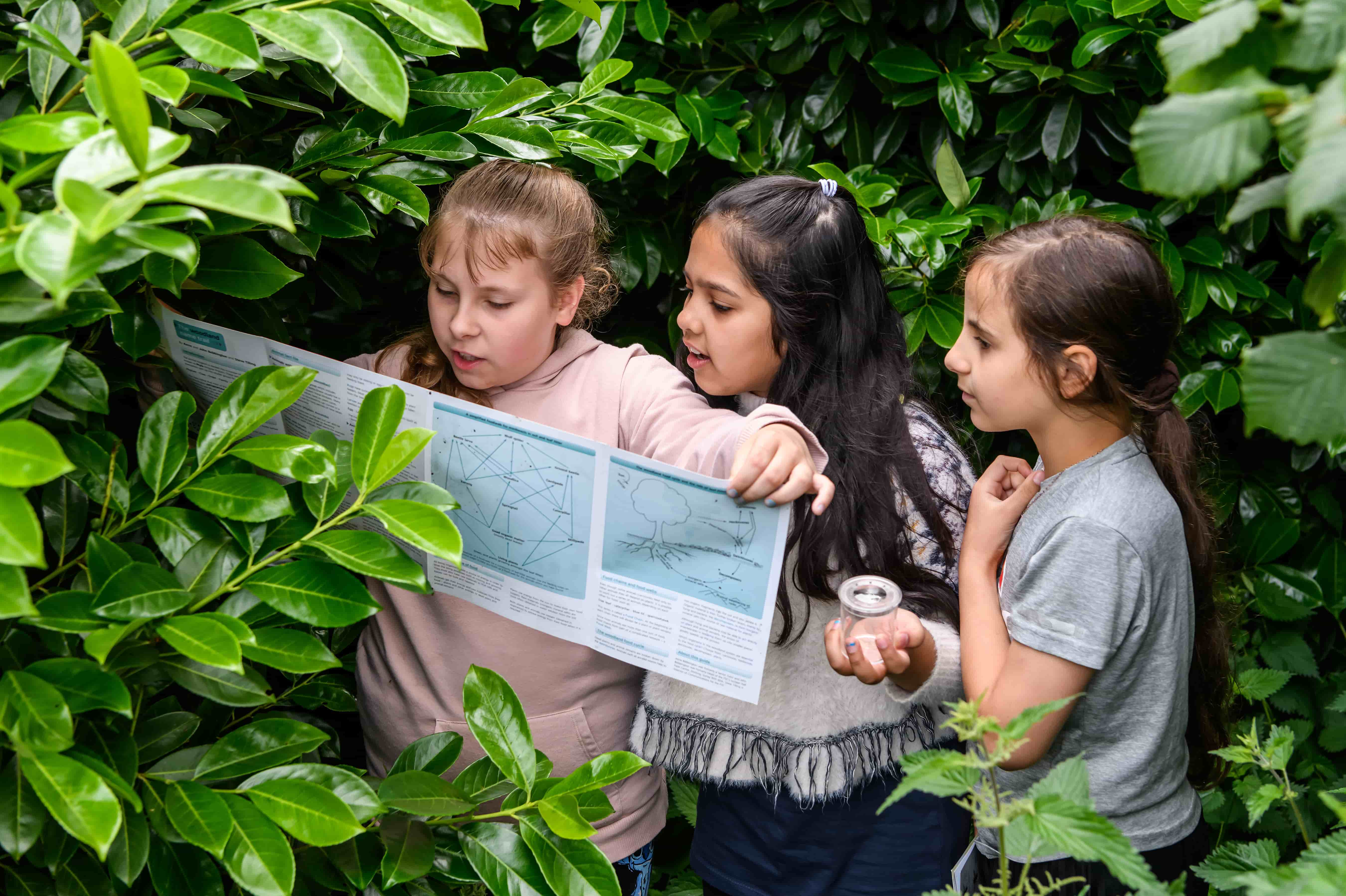
The outdoor areas of Scotland’s schools make up 14% of local authority-owned land in Scotland. However, 97% of that area is either grassland or hard surface. These are poor environments for biodiversity, learning and play. There is a great opportunity to do more to use school grounds to address climate risk, while creating an outdoor environment that supports learning and play.
Architecture and Design Scotland and Learning through Landscapes are working together on a new project - the Climate Ready School Grounds.
Our partnership connects national, regional, and local place-making and education estate strategies with building users, teaching staff and the wider school community.
The Climate Ready School Grounds project will provide guidance on the design, creation, and use of outdoor spaces. The resources will be informed by the engagement and co-design workshops with three schools from three local authorities.
We are working to create climate-adapted visions for their school grounds and to understand the barriers to delivering physical change that responds to local climate risks.
The project offers the opportunity to support all schools (teachers, staff, and pupils), designers and local authority learning estate teams that are keen to understand and develop their grounds to do more, to adapt to the anticipated local impacts of climate change, help to increase biodiversity, improve air quality, and encourage community engagement and participation in climate action.
After a series of workshops, the outputs will be published in Spring 2023.
“High-quality climate education has never been more important. As the stark reality of the impact of climate change is seen we need all children and young people to not only understand the science of climate change but witness real-world adaptations in their school grounds and communities. This will inspire them to think critically and creatively about what can be done to tackle and mitigate the climate emergency.”
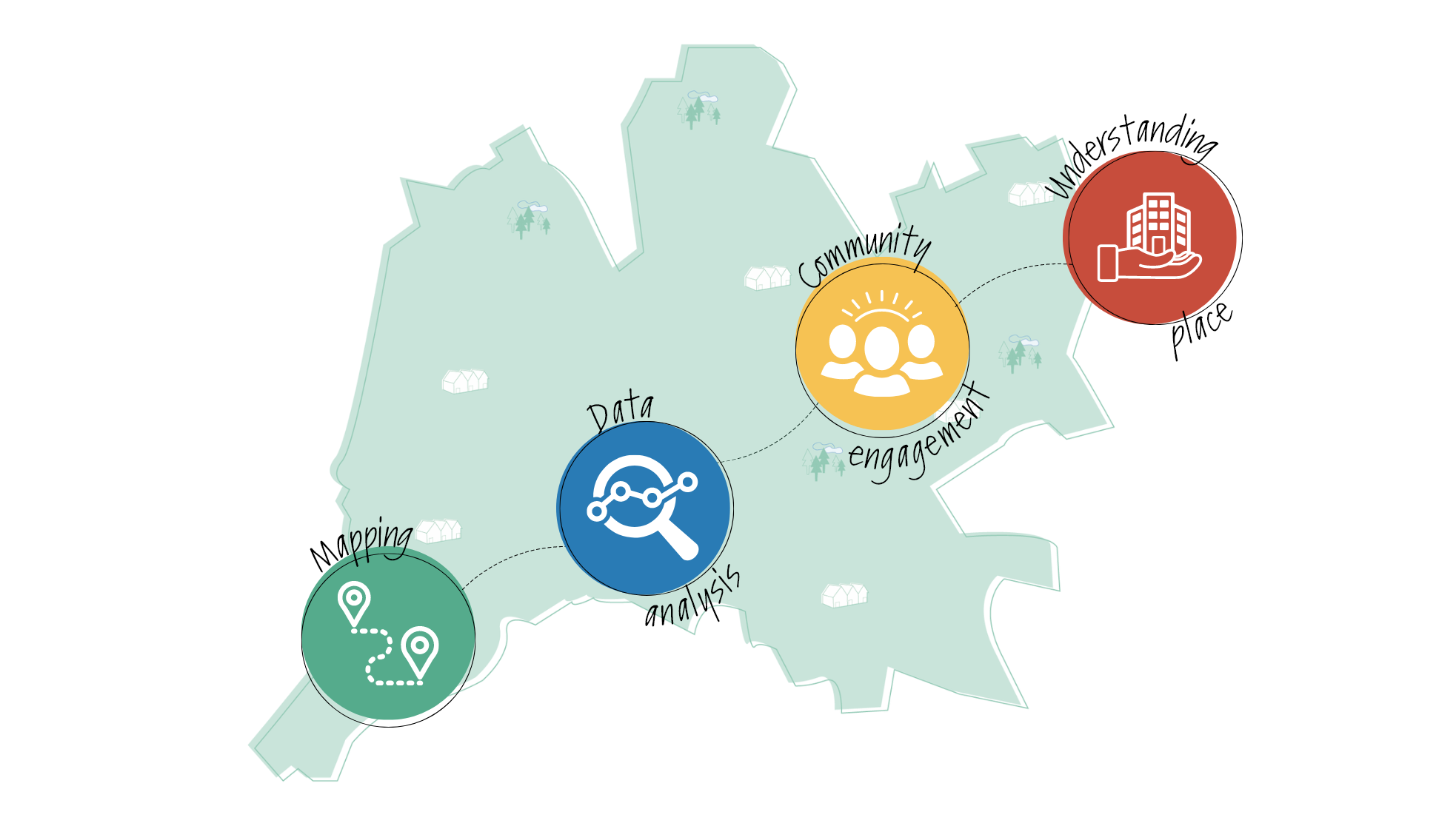
From holidaymakers to new residents, Stewarton in East Ayrshire is a popular place to stay. The town’s population has steadily been growing and it has seen several new developments. East Ayrshire Council believes this growth will continue.
But with this growth comes added pressure on the town’s health, education, social care, and transportation infrastructure. The council felt it needed a plan to address the existing infrastructure. They got in touch with the Key Agencies Group to establish a plan for Stewarton, taking a whole-place approach.
As part of the Key Agencies Group, our purpose was to bring departments from East Ayrshire Council and relevant key agencies together. We also helped establish a partnership programme with the Scottish Government’s Digital Planning team.
Together we looked at Stewarton through the lens of a 20-minute neighbourhood. The Digital Planning team helped collate key information from the council and agencies.
We looked at residents’ experiences of travelling to access everyday facilities from residential areas such as:
The experience and local knowledge gave us a better understanding of the town’s character and identity.
To gather more information, we also ran the Place Standard with a Climate Lens exercise with community groups and the council.
By using this whole-place approach, the council is now better able to identify appropriate sites for facilities and services based on distances, experiences, and the community’s needs for walkable and cyclable places.
Our approach to understanding Stewarton was appreciated and recognised by the council - from mapping the town from the experience of individuals (the human scale) to using the data collected.
The new Development Framework Supplementary Guidance and Action Plan has been drawn from our work with Stewarton. This is now available on the council’s website.
Our next round of support to Stewarton is to help the council consider the best and preferred location for new schools
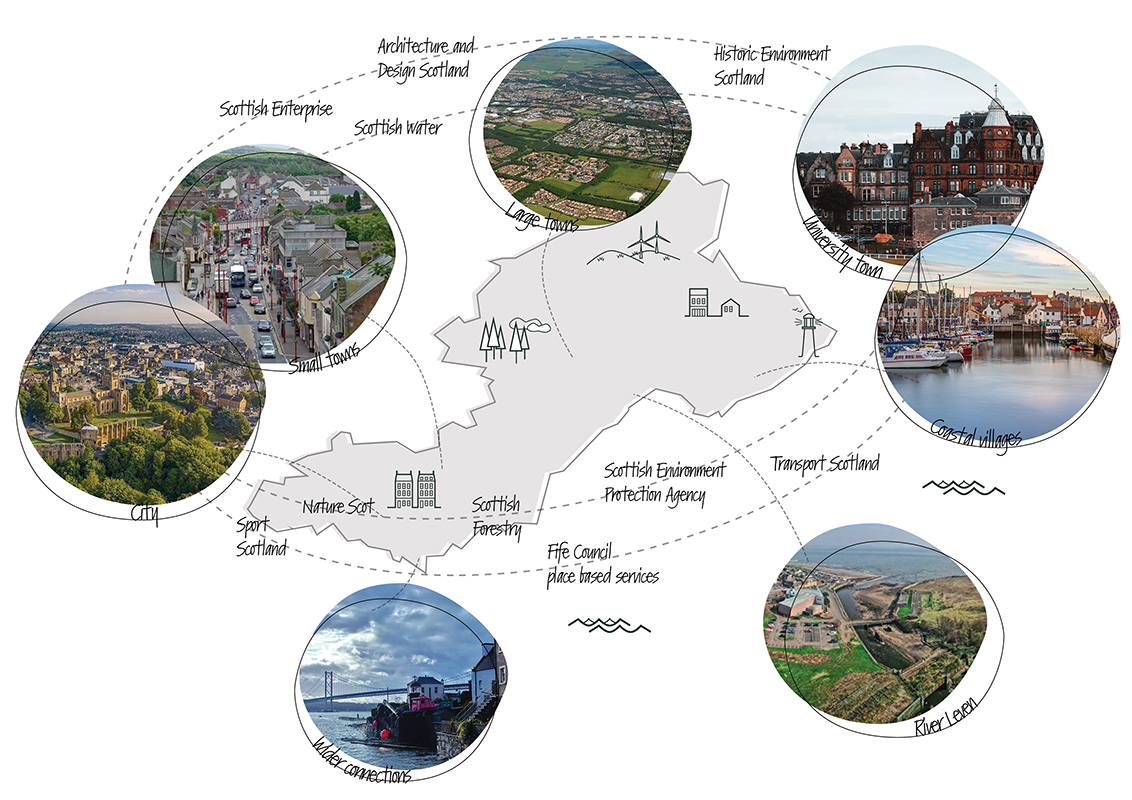
Fife Council is in the process of preparing a new Local Development Plan. It seeks to include the needs and hopes of its communities across Fife.
However with new national policy and legislation, including draft National Planning Framework 4, which requires local authorities to work differently on their plan preparation, the council wanted support to take a place-based approach. We were able to support Fife Council through the Key Agencies Group Green Recovery Offer.
We worked with the council’s Planning Policy & Place team to guide early planning from focusing on technical aspects towards seeing the bigger picture. We helped them develop a collective approach to gathering and reporting evidence for the area. Our brief was to ensure that departments and different levels (from officer to heads of service) collaborated to achieve a collective, place-based approach.
Through workshops, we looked at Fife as a whole. What were the common issues, challenges, and opportunities? We asked, “What kind of a place is Fife 2050?” and used the responses to create a shared story of change.
Through a whole-place collaborative workshop, we helped lay the foundations for a collaborative corporate approach and a new way of developing the Local Development Plan.
Services from across the council were encouraged to collaborate. Their ongoing conversations were needed to make sure that strategies, investments, and activities pulled in the same direction. By collaborating they could address common challenges and opportunities.
Through local area collaborative workshops, we were able to start pinpointing data and information gaps to see what the local area’s priorities were. A new approach was agreed to help further discussions and analysis of what needed to be developed. The new approach has been taken on by the planning team.
Through a storyboarding workshop, we helped the council develop methods and approaches to map the format and visual content for a place-based evidence report. The methods introduced have been taken forward by the planning team.
Image credit: (Small towns) Cowdenbeath high street, Paul McIlroy on Wikimedia; (City) Dunfermline Abbey and city, Fife Council; (Wider connections) North Queensferry and Forth road bridge, Viktoras Jakovlevas on Unsplash; (River Leven) The Leven Project; (Coastal villages) Anstruther harbour and town, Neil and Zulma Scott on Unsplash; (University town image) St Andrews, Yukon Haughton on Unsplash; (Large towns image) Glenrothes, Yoostar on Wikimedia
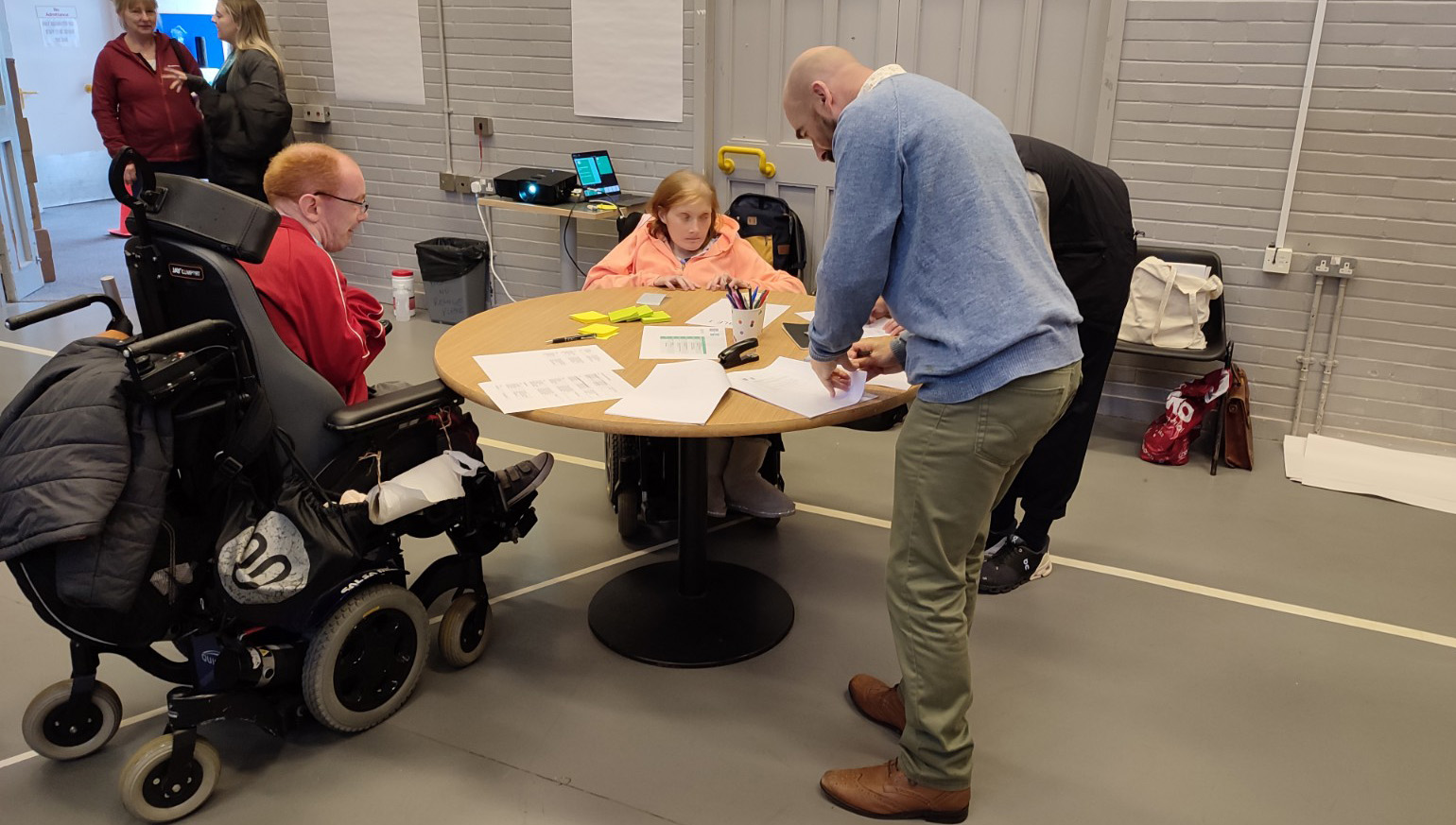
In 2022 Architecture and Design Scotland started to work with Capability Scotland to support the charity’s ambitious proposals that will rewrite how care is provided to those with complex needs. Capability Scotland is working to deliver a flagship £25 million facility at Bertha Park, Perth. The project will deliver residential and specialist care facilities at a new site.
We have worked together to find out the needs, aspirations and visions of the staff and families that will use the facilities. We have drawn from our extensive experience of working in the health sector to explore options and approaches.
Stephen Oswald, Capability Scotland Project Lead, said:
“We have a rare opportunity to start with a blank canvas and completely re-imagine our services to create a leading facility that pushes the boundaries of housing and care for people with complex needs.
“Through sharing learning and working together we will challenge stereotypes of what is possible for disabled people and ensure we are achieving equality in all aspects of life – with key stakeholders making the decisions from the outset.”
The process has included exploring a typical day in the life of the facility – from the perspective of a resident, their families and the staff providing the care. This has helped us identify the key priorities and benchmarks for the project. The output will help to inform the development brief for the project.
We have drawn on our experience from other major health projects, our engagement with the people who will use the space and learning from Capability Scotland who are the experts on providing care for people with complex needs. We have hosted three hands-on workshops with the people who will be relocating to live in the new community.
In 2023 we will continue to work with Capability Scotland to support the development of this ground-breaking facility. We plan to share our learning from this project.
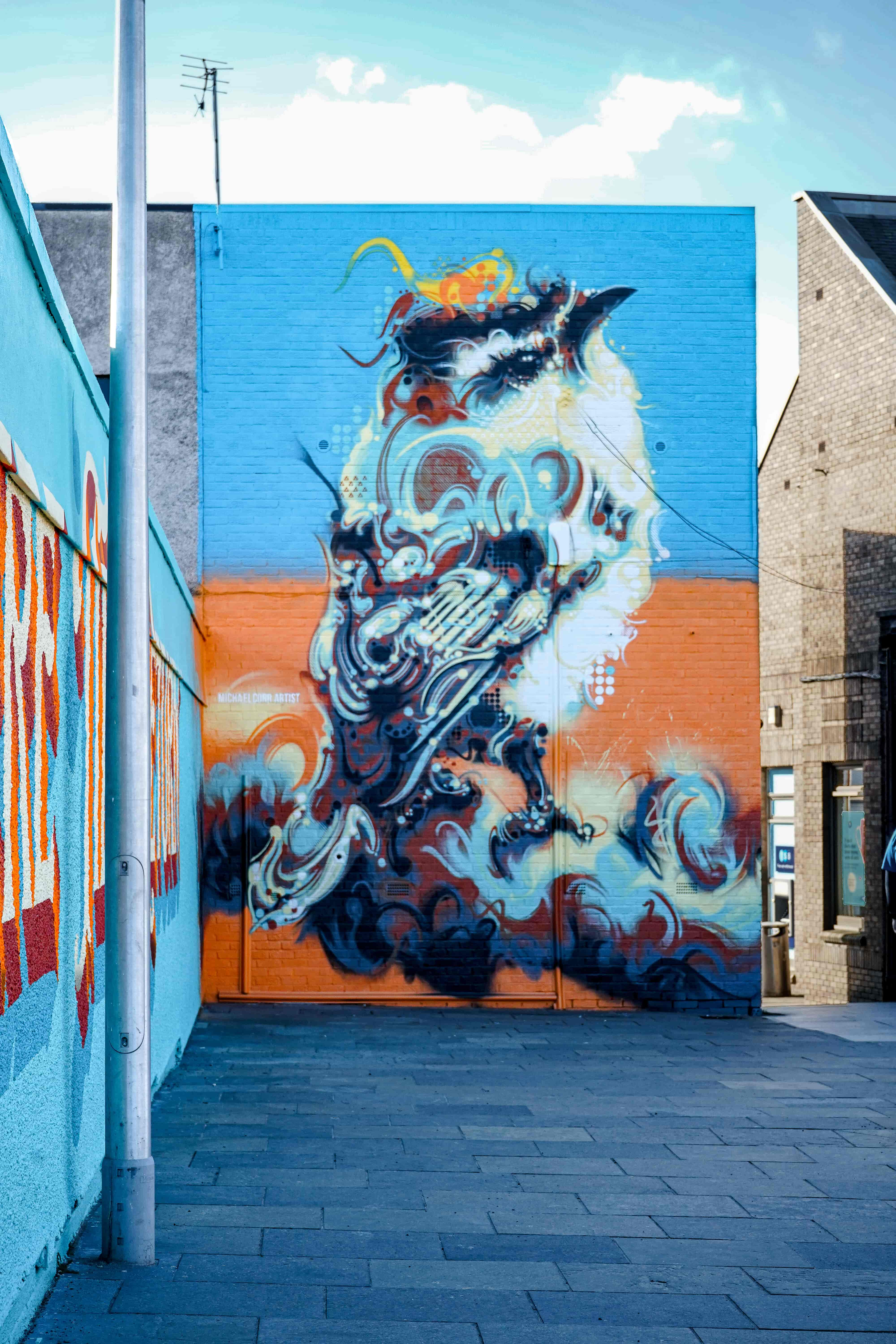
The Primrose Street project was awarded the 2022 Scotland Loves Local Town Centre Living Award. It formed part of ‘Living Alloa’ which was the winner of the 2022 SURF Awards in the ‘Improving Scotland’s Places’ category.
Both these wins demonstrate how a place-based approach moved away from a quick physical makeover in favour of a “forever” project that is rooted in delivering positive long-term outcomes for the people and the place.
The award-winning Primrose Street project is at the heart of Alloa. By creating intergenerational homes in the town centre, it also aims to act as a catalyst for wider regeneration. The development provides a housing solution that supports older people to stay within their own homes for as long as possible.
We have been involved in the project since 2018 when we were invited by Clackmannanshire Council. We supported the project through a series of design advice workshops.
The workshops brought together stakeholders - from planners and architects to dementia and social care professionals - to help ensure the highest standard of living environment, inside and out. These workshops happened in parallel with our support to the council to improve the town centre
Bringing the housing at Primrose Street to our advice workshops ultimately led to a completely different take. Not only on the delivery of the housing within the specific site but on the whole approach to the town centre.
Our Rural Futures event in March 2022 brought together organisations working to connect our rural places, looking especially at housing and transport.
We brought staff from Fife and City of Edinburgh Council together to share knowledge on how to map and deliver a 20-minute neighbourhood.
We worked with Glasgow City Council to help them transform their Local Development Plan into a corporate document and take a place-based approach to their work.
Since starting the Green Recovery Offer with the Key Agencies Group in 2020, we have supported 13 projects. We are now in the process of refreshing this work, which will be published at the start of 2023.
In 2022 we supported 18 health developments across 10 health boards. This represented over £2bn worth of public investment for Scotland’s health estate.
We brought together representatives from across City of Edinburg council and key agencies, supporting the city’s ambition for a net-zero, 20-minute neighbourhood in West Edinburgh.
Bringing people together to deliver thriving places is at the heart of our work. We can all learn from each other. We are here to help share the experiences of those who have done, with those who will do.
In this section, you can read about the networks we support to build wider capacity in the sector. You can also find out about our community climate action approach in the Climate Action Towns project where we help create connections within and among towns.
In this section:
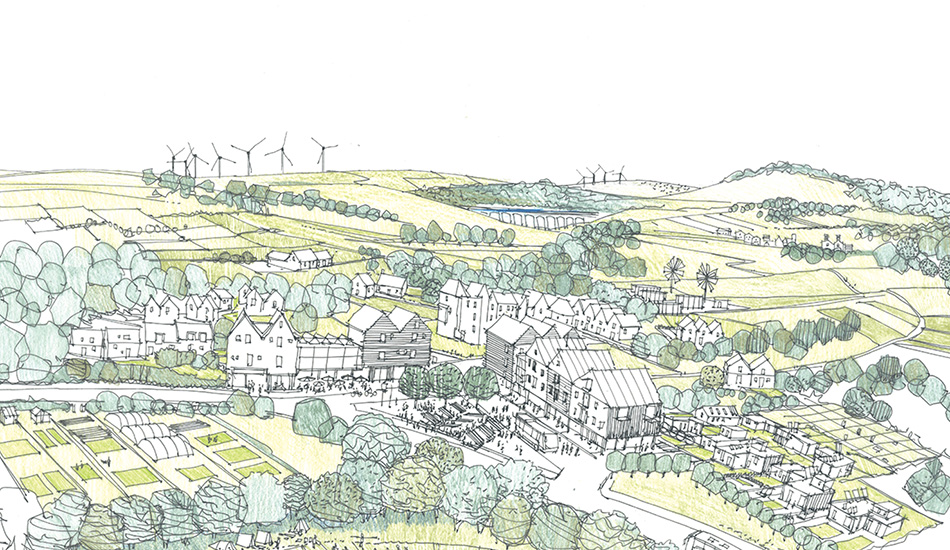
The climate emergency touches all aspects of our work. In the year after COP-26 in Glasgow, Scotland’s Climate Week in September was a great opportunity to reflect on our work on the climate emergency - especially from the perspective of communities.
We organised an online event that attracted an audience of 245 people. Chaired by our board member Kirsty Macari, it featured speakers from Keep Scotland Beautiful and the Improvement Service. Audiences were able to hear about community-based climate action from across Scotland. We also profiled the data-driven work we have been doing through the Climate Action Towns project.
Catriona Laing from the Energy and Climate Change Directorate, Scottish Government, opened the event by giving the perspective of how the three profiled projects fit into the bigger picture.
This event demonstrates the benefit of collaboration – both internally and with other agencies. All guest speakers contributed blogs prior to the event. We summarised our own climate work on our website.
The Climate Week event was an excellent opportunity to share learning with a wide audience. We are already planning for Climate Week 2023.
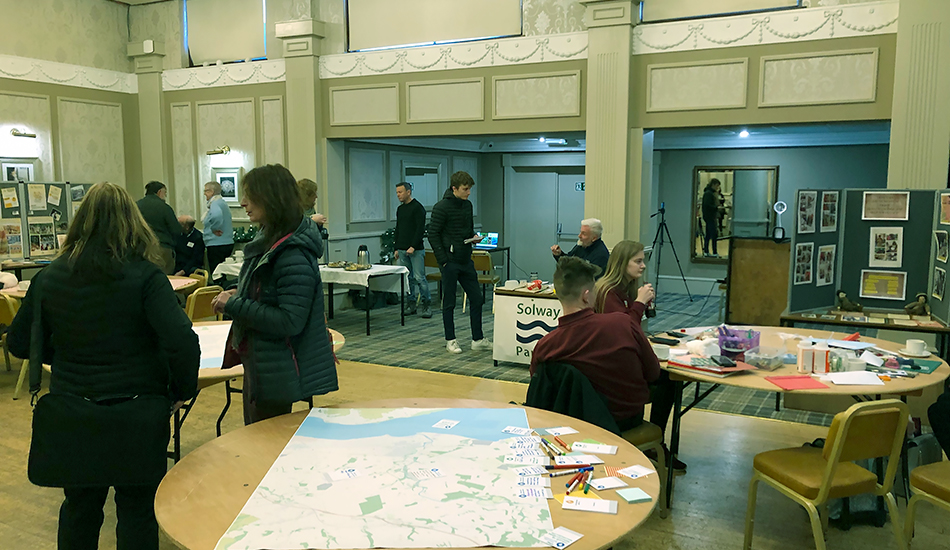
Across Scotland, initiatives are moving beyond our cities to consider what can be done to reduce the effects of climate change in towns and villages. Our Climate Actions Town project supports community-based climate action in a network of towns across Scotland. In 2022 we were delighted to add on two new communities. They were Drongan, Rankinston, and Stair in East Ayrshire and the Benarty communities in Fife.
Throughout the year we have been working with the individual towns in the network. However, a key aim for this year was to connect the towns to open up wider conversations. By collaborating with each other we encourage peer support and wider learning.
As themes are beginning to emerge, we convened the first gathering of all nine towns. Hosted in a virtual space, the event brought together people from across the Climate Action Towns to meet, share learning, exchange ideas and get to know one another.
As an introduction we shared the common themes – illustrated by stories from the towns. The issues and themes that emerged included:
The discussion continued in smaller groups. The participants agreed on topics that they would like to explore further in 2023. In response we are planning a series of topic-based sessions, collaborating with other organisations.
We received feedback from the participants at the gathering that they valued the opportunity to meet a variety of partners supporting community-based climate work. They also mentioned the benefit of finding out the different stages towns are at in their work.
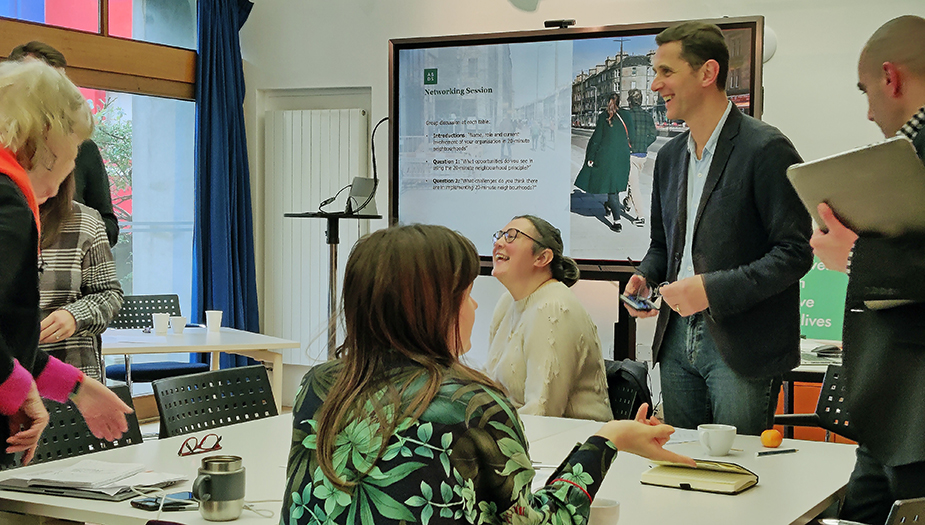
In 2022 we continued to host the Local Authority Urban Design Forum. The Foum is a space for local authority professionals to meet and exchange ideas and their experience.
At the start of the year, the theme was learning from COP-26. In November we ran a hybrid event on 20-minute neighbourhoods. It provided a great opportunity to share what we have learned from our work with the Key Agencies Group with an audience from across Scotland.
The Forum also provided us with insights into the issues that are key concerns for our colleagues working in local government.
In March 2022 we hosted a Public Sector Client Forum on the theme of Rural Futures. When it comes to planning their places, rural communities need to work differently from cities and towns, especially around housing and transport. Community organisations in rural places also need to understand what each other is doing to pool effort and resources.
Through a tailored training programme developed with the Scottish Community Development Centre we support local organisations and individuals in each Climate Action Town to help build community capacity.
In one of our Climate Action Towns, Campbeltown, we worked with social enterprise Inspiralba to create and fill a post to support change on the ground.
The latest round of funding in the Rural Tourism Infrastructure Fund was announced in October 2022. We supported the project, led by Visit Scotland, forming part of the assessment panel.
We are on the oversight Board for the Scottish Government’s Gypsy/Traveller Accommodation Fund. We facilitated a workshop to share learning between Local Authorities.
In 2022 we hosted two events for the Local Authority Urban Design Forum – the themes were learning from COP-26 and 20-minute neighbourhood.
As we work on projects across Scotland, we hear what works, and sometimes what doesn’t. We are there to gather this insight and help identify the barriers to creating thriving places in Scotland. This means that we need to build and maintain good relationships and partnerships to help influence this change.
In this section, you can read about how we have shared examples of great projects and the methods we have used to do so.
In this section:
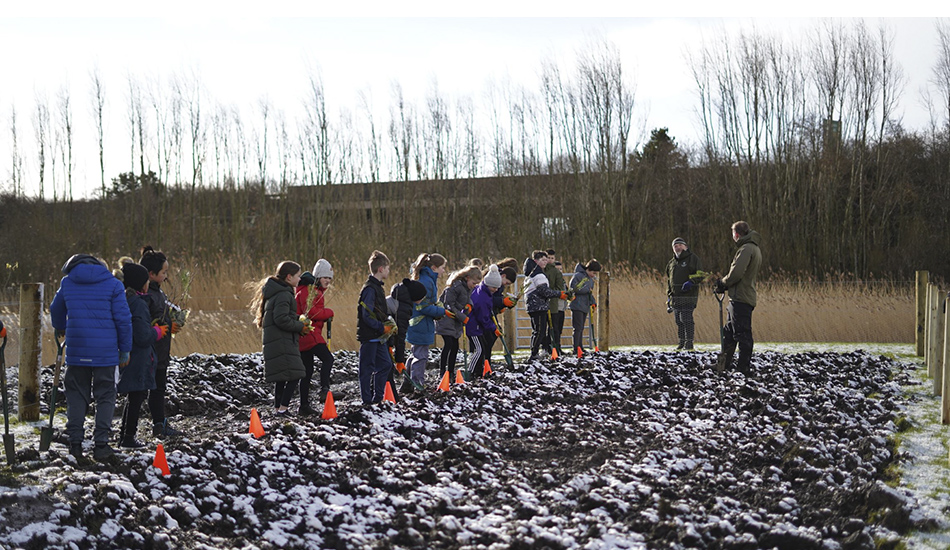
We are continuing to work with Queen Margaret University (QMU) on an outdoor learning project. This partnership is helping us develop and create resources for teachers, trainee teachers, students, and schools to support outdoor learning.
QMU identified unused and underdeveloped areas within the campus. These have been developed to become an Outdoor Learning Hub. We realised that the Hub could form the basis of action research, allowing us to capture and record the process of development from an unused space to a thriving outdoor educational resource.
Leading the project is Patrick Boxall, Lecturer in Initial Teacher Education at QMU. He explained:
"We are preparing different outdoor learning spaces and are excited about the opportunities that these and the Hub will be able to offer our own students, staff, the local community, and educators across Scotland […] The Hub will become a place to connect people and communities, and a space for creative learning, research and professional development.”
This project has developed beyond our initial expectations. It has grown to include further organisations, including NatureScot’s Wee Forest project – creating a small woodland area to encourage biodiversity.
Interest in outdoor learning continues to grow. QMU has recently established a short course designed to support leaders and practitioners from a range of educational organisations and communities to help them to to help them to acquire skills needed to develop outdoor places for learning.
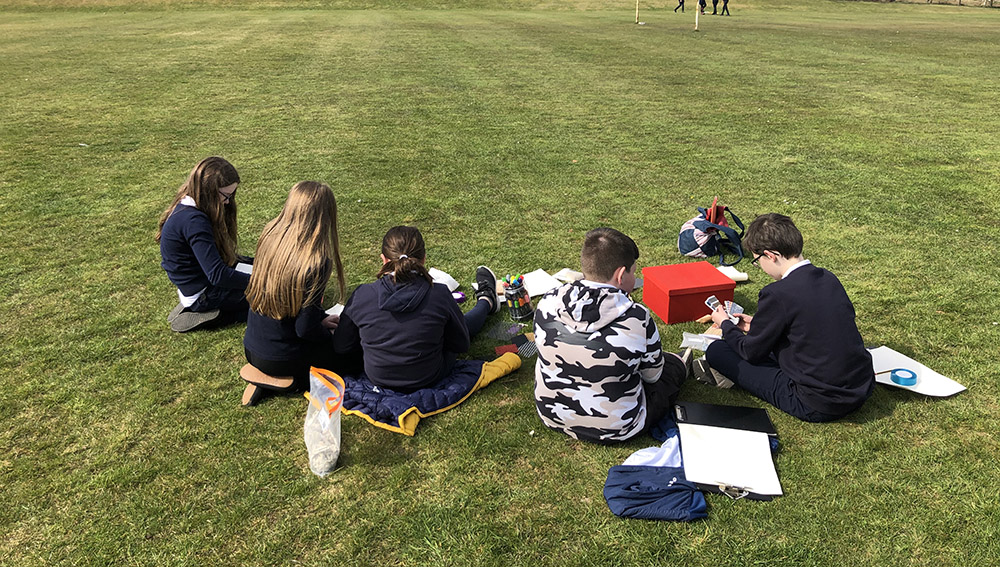
Tests of Change is a process that tries out new ways of working to create learning spaces. It is a process where we engage with learners and teachers to highlight issues and opportunities in a learning environment.
Tests of Change works with the learners and teachers to develop spatial strategies for schools - old and new. We have used it as a tool to rethink learning spaces and create better spaces to learn, teach and inspire.
In 2022 our main focus was to re-imagine outdoor spaces to maximise the opportunities for learning and play.
We worked with Mearns Primary, East Renfrewshire and Skene Square Primary, Aberdeen City. These are two very different environments. One is surrounded mainly by grass and mixed surfaces, while the other is a very traditional concrete urban playground wrapping around a Victorian school.
In both places, we worked with the pupils, teachers, and parent councils to create designs and feasibility studies. The idea is to maximise their outdoor area based on the way they want to teach and learn, whilst using limited budgets.
Researching and observing how the spaces are already being used ensure that the spaces grow with the schools’ aspirations.
The proposed new spaces will support the Curriculum for Excellence, giving pupils opportunities to experience and thrive in outdoor learning environments.
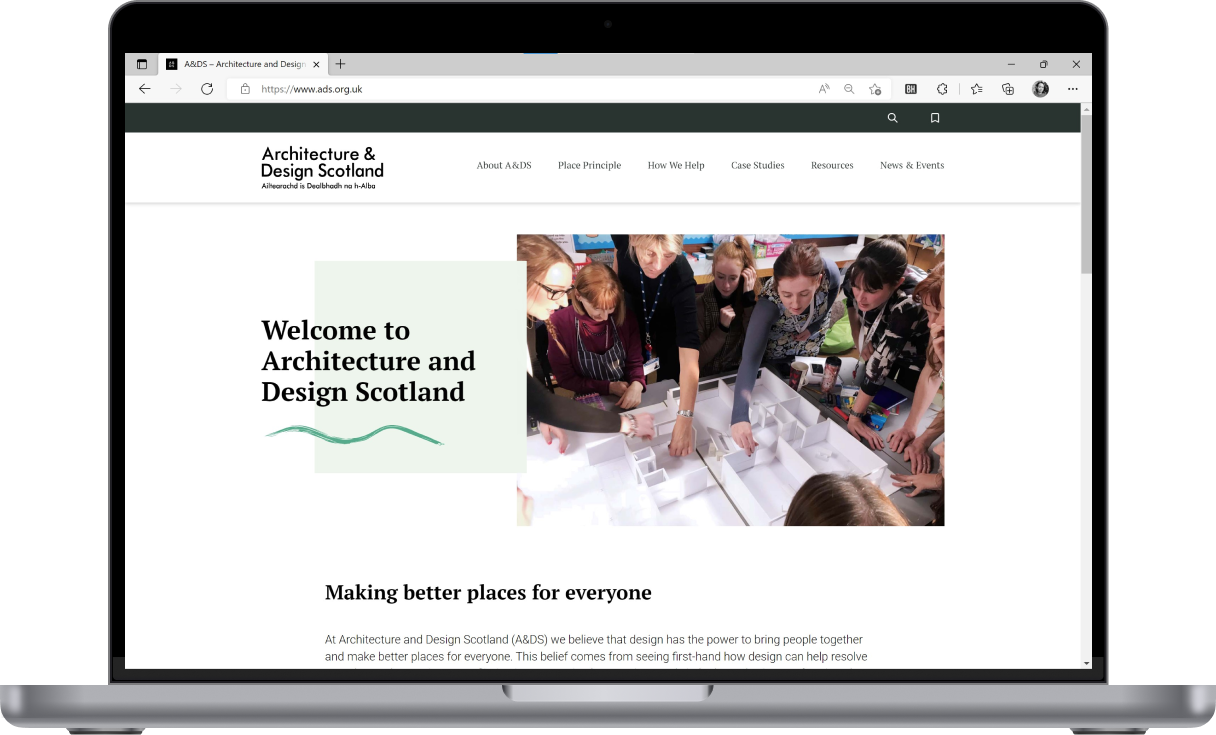
A key part of our work is to share our insights with others. Our website and social media channels are key to helping us connect with the public and those creating places. In 2022, as part of our digital strategy, we completed a re-design of our website. It launched in June 2022.
Accessibility was the key consideration during the design process with a key aim to make sure our language is easy to understand.
We also introduced a specific section introducing the Place Principle. The site also aims to build a common understanding of a whole-place collaborative approach.
We do this by sharing examples and evidence of its benefits. We have tried to simplify those examples, using video or other formats where possible. We are also developing ways to reduce the climate impact of our website.
Since the site was launched in June, we have received positive feedback. Although we signifi cantly reduced the number of pages, our visitor numbers have increased. The new site is supported with social media campaigns.
In 2023 we will continue to analyse how our users access our materials and respond a needed.
We published a case study exploring how professional and community groups have worked together to improve Glasgow South Central’s nine neighbourhoods. Across six short videos, we heard from those involved.
Learning Places Scotland is an annual gathering of the education community. We collaborated with the Scottish Government and the Scottish Futures Trust to support the conference, and we presented our work on Outdoor Learning.
We took part in a short-life working group on town centre living – a key policy of the Scottish Government. We are working with Scottish Futures Trust and Scottish Land Commission to summarise the findings.
We hosted international visitors, including planners from Norway and members of Association Française du Développement Urbain (AFDU). We also presented at the Academy of Urbanism Congress in Belfast.
We took part in a series of workshops with Zero Waste Scotland, focusing on the reuse of construction and demolition waste, supporting the consultation on ‘Delivering Scotland’s Circular Economy’.
We launched a suite of learning space design and assessment tools based on shared design principles, developed collaboratively with the University of Edinburgh, working with schools and other stakeholders.
As Scotland’s design agency, we champion good design and collaboration. We collaborated with the Royal Incorporation of Architects Scotland and the architecture profession to host and celebrate the Student Awards for Architecture. In 2022 the projects brought creative and inspiring approaches to big challenges.
We also started our preparation for Scotland + Venice in 2023 and we were able to announce the successful creative team.
In this section
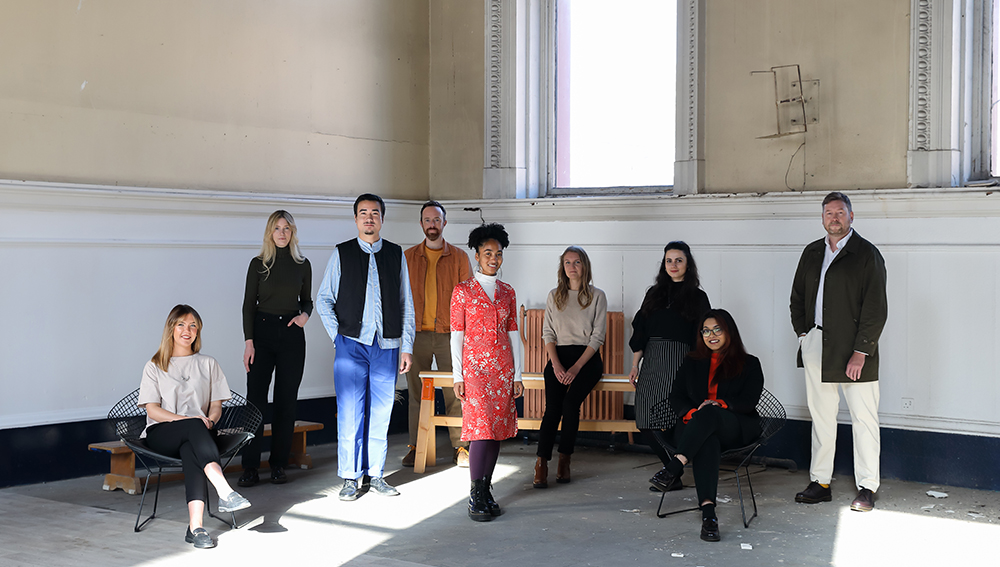
In 2022 we worked with the Scotland + Venice partnership to select the team that has been invited to develop a project for the 18th International Architecture Exhibition at La Biennale di Venezia 2023. The partnership has commissioned a creative team consisting of the Architecture Fringe, ism and /other to develop new work. Their initial proposal has been submitted as a collateral event proposal at the Biennale
The creative team - from left to right: Amy McEwan, Aoife Nolan, Carl Jonsson, Neil McGuire, Mia Pinder-Hussein, Kristina Enberg, Alissar Riachi, Alyesha Choudhury and Andy Summers.
Taking inspiration from Biennale curator Lesley Lokko’s The Laboratory of the Future theme, the project will draw out new perspectives from Scotland. The project is anchored in communities in three distinct regions of Scotland. By exploring local languages, the team will provide insight into how land is perceived and used. Communities will work with creative collaborators to inform a new inclusive lexicon of their place.
The research in Scotland will inform a place of shared imagination, where new approaches to land and the global climate emergency will emerge. More details will be announced in early 2023.
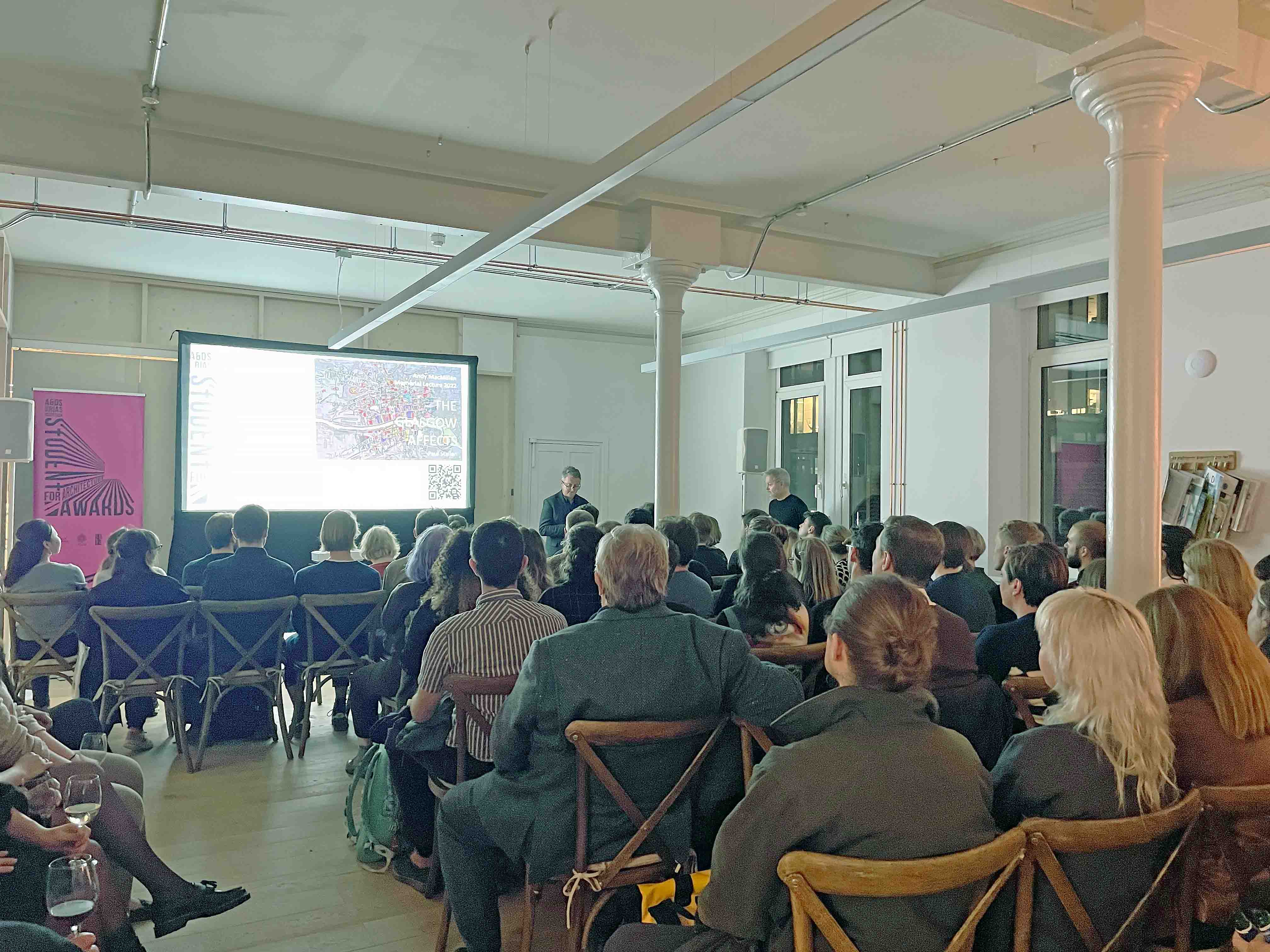
The Architecture and Design Scotland and Royal Incorporation of Architects in Scotland (RIAS) Scottish Student Awards for Architecture took place in October 2022. Over 60 projects were submitted, and the judges selected three winners across fi ve categories. The winning projects included ideas on tackling the climate emergency through reusing materials, social sustainability in public housing development and responding to urban sprawl.
For the first time since the pandemic, the awards were held in person. Paul Stallan, Design Director of Stallan-Brand and guest judge of the awards, delivered a thought-provoking Andy MacMillan Memorial lecture titled the Glasgow Affects.
The event, held in Collective Architecture’s Glasgow studio, was sold out and attended by students and the public. It provided the perfect opportunity to bring together academia, practice and the public. In 2023 we hope to continue to see students submitting such high-quality projects and to get the chance to celebrate Scotland’s emerging talent.
The winners are:
The Scotland + Venice project What if…?/Scotland, created by 7N Architects and exhibited at V&A Dundee throughout 2021, won the Design for Good category at the Scottish Design Awards.
We designed and delivered a training programme for all our staff to help raise awareness of our work. Sessions included writing for the web, social media content, presentation skills and dealing with the media.
Working with Scottish Futures Trust Learning Estate Infrastructure Team we continued to facilitate Shared Learning Events. These events are open to all local authorities across Scotland.
We implemented the social media aspects of our digital strategy. We were able to grow our followers, increase engagement and use social media to contribute to our website's success.
Already in 2023, we have had the launch of the new National Planning Framework – with climate, place and design at its heart. At Architecture and Design Scotland we are looking forward to another amazing year of supporting projects, places and people up and down the country, as well as planning our work to 2027.
In March, we will be launching our new Place Forum which will bring together practitioners and decision-makers from all sectors and all parts of the country. The aim of the Forum is to share experience and learning and capture issues related to place-based working. Our hope is that the Forum is very beneficial to those who attend and allows us to better understand the barriers that still exist in changing the way we plan, design and build our places.
In May, ArchiFringe, ism and /other, supported by Architecture and Design Scotland will unveil Scotland’s latest contribution to the Venice Architecture Biennale and our first in Scotland’s permanent home in Venice at the Docks Cantieri Cucchini, close to the Arsenale.
In the last half of 2022, we began actively measuring our organisation’s carbon footprint. Our longer-term Climate Plan became more tangible in 2022 when we submitted our very fi rst Public Bodies Climate Change Duties report.
As well as recording our emissions, we set out our aspirations and goals for achieving net zero by 2045 as per Scottish Government targets. Throughout 2023 we will continue to explore how we can be more carbon-conscious when delivering our projects.
Throughout the year our teams will be working with partners to support public sector investment through new buildings for learning and healthcare buildings, develop place-based plans for our neighbourhoods, towns and cities and tackle the climate emergency.
We will also be taking stock of our efforts to drive change in the way our places are planned and designed. In 2021, we set out to support the adoption of the Place Principle and two years on, we will be speaking to the widest range of people to understand the Principle’s impact.
We are looking forward to working with all of our partners to achieve our vision of a Scotland whose places are healthy, sustainable and thriving, where everyone works together to shape their future.
We want the Place Principle to be the normal way of doing things in Scotland. How we help make that happen is by promoting good design and collaboration, connecting people and organisations, providing advice and skills, and sharing insights from our work. If you would like to explore how we can help, please get in touch with us.